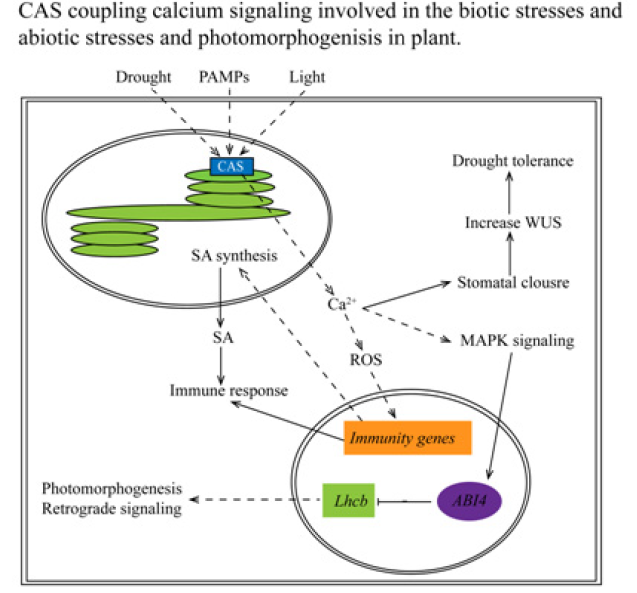The calcium-sensing receptor (CAS), as a chloroplast thylakoid membrane protein, involved in the process of [Ca2+] ext-induced [Ca2+]cyt increase (CICI) in the plant. However, the underlying mechanism regulating this process is lacking. Furthermore, recent evidence suggests that CAS may perform additional roles in the plant. Here, we provide an update covering the multiple roles of CAS in stomatal movement regulation and calcium signaling in the plant. We also analysis the possible phosphorylation mechanism of CAS by light and discuss the role of CAS in abiotic stress (drought, salt stress) and biotic stresses (plant immune signaling). Finally, we provide a perspective for future experiments which are required to fill gaps in our understanding of the biological function of CAS in the plant.

